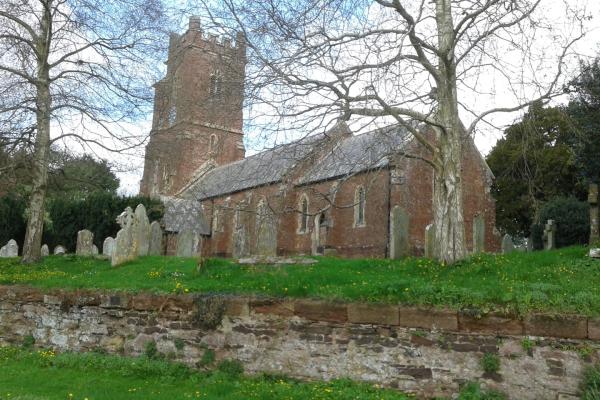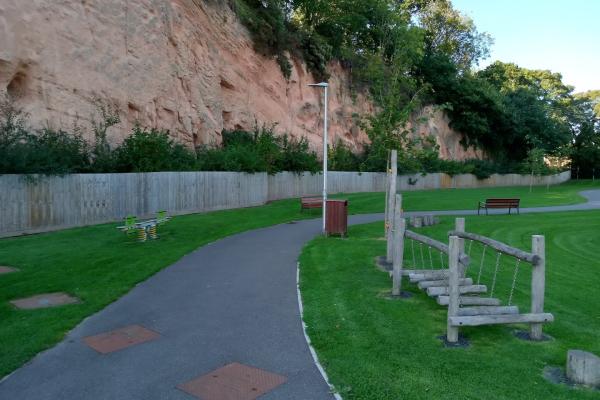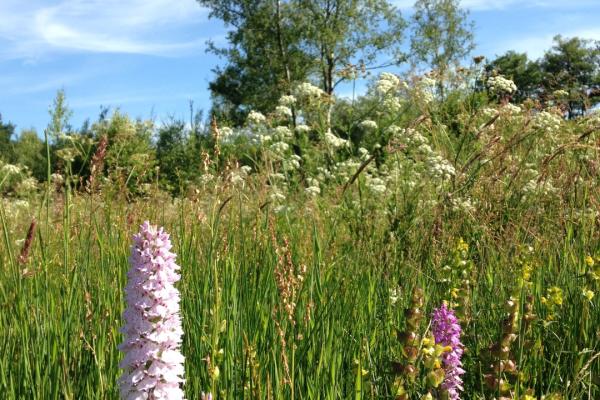Rocks
Devon is home to some of the oldest rocks in the country, and there are many types in the Clyst Valley:
- BEDROCK lies beneath the soil; this solid rock was formed 200-300 million years ago during the Permian and Triassic periods when the Clyst Valley was a desert. When floods swept through the valley carrying sedimentary rock, this settled over time.
- BRECCIA is a type of stone made of lots of different rock and minerals melded together by intense heat. It is often used in historic buildings.

- RED SANDSTONE: A great place to view this is at Bishops Court play park

- VOLCANIC LAVA settled millions of years ago when volcanoes existed across Devon. Dolbury Hill at Killerton is made of volcanic rock. The lava formed colourful pink and purple stone that has been used in historic buildings across the Clyst Valley. Examples include Old Rockbeare Bridge and the Chapel of the Holy Evangelists, Killerton Park.
Soils
There are several types of soil in the Clyst Valley.
- LOAM is red in colour and found across the Devon Redlands; with a sandy texture, it is slightly acidic. Its red colour was created millions of years ago when iron leaked from the desert walls and sank into the rocks below ground. This soil drains well and is used in farming for its excellent growing quality for cereals, fruit, and vegetables. However, this soil is eroded by wind and water which in turn can leak harmful substances into rivers, so it requires careful maintenance.
Classic red soils in a ploughed field near Clyst St George - CLAY is found across the floodplains and is less permeable than other soils. Stiff and sticky, especially when wet, liquid and gas cannot pass through it easily, so clay soil often floods in winter months and does not drain easily. Clay soil is most often used for grazing dairy and beef cows, because it holds on to nutrients easily.
- PEAT soil is made of plants that have not fully rotted. This soil stretches deep into the ground and is an important part of the habitat for the local wetlands where lots of plants and animals thrive.
Southern marsh orchids on the peat soils of Hellings Parks, near Broadclyst - MERCIA MUDSTONE is a red coloured clay that was formed between 200-250 million years ago in the Triassic period; it is found in Whimple and the surrounding areas.
Sustainability
- Soils are important because they absorb Carbon Dioxide (CO2). CO2 traps heat in the air and causes the surface of the earth to warm, which is dangerous for the planet. This is why soils must be looked after and respected properly to keep them healthy.

